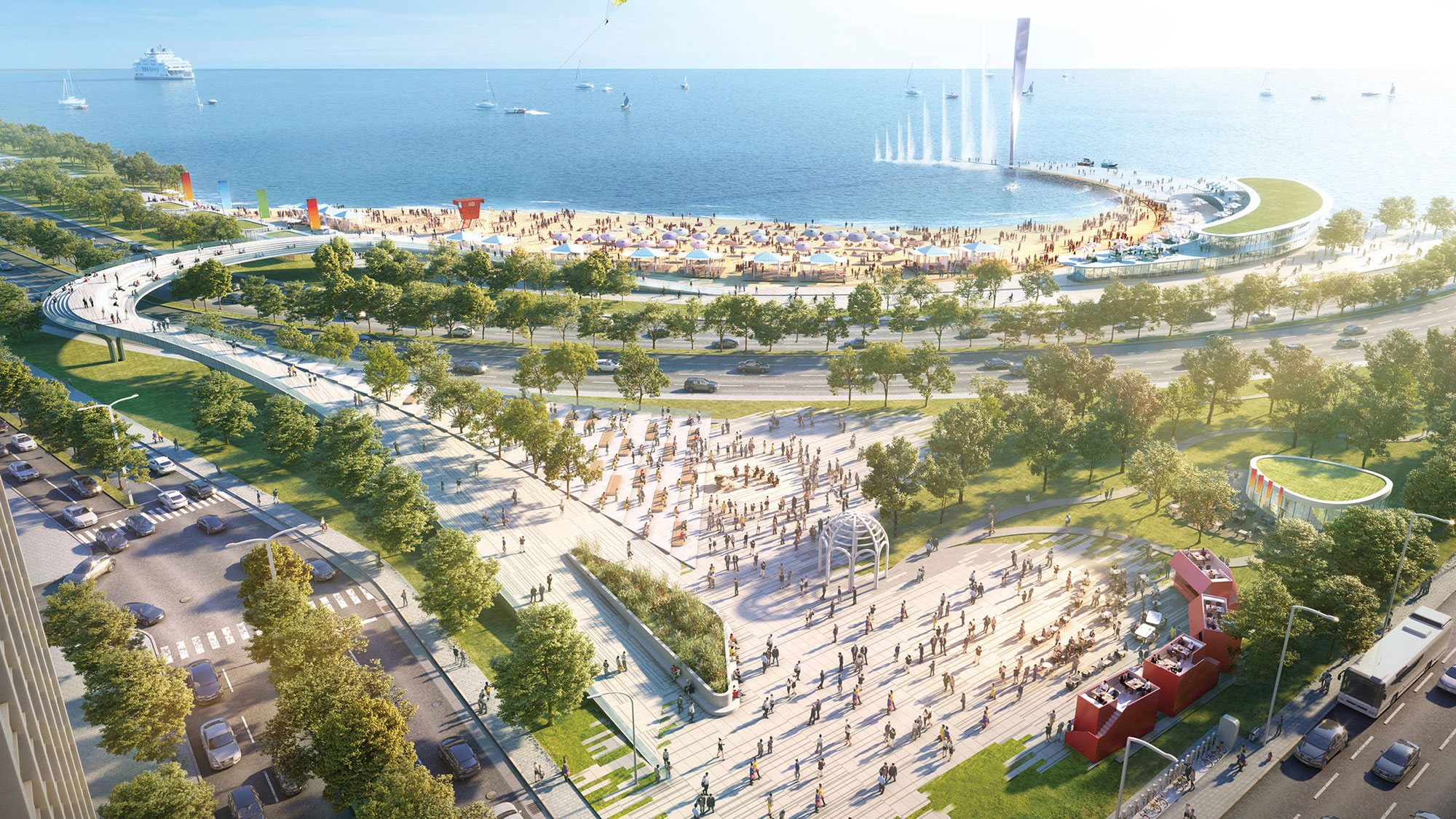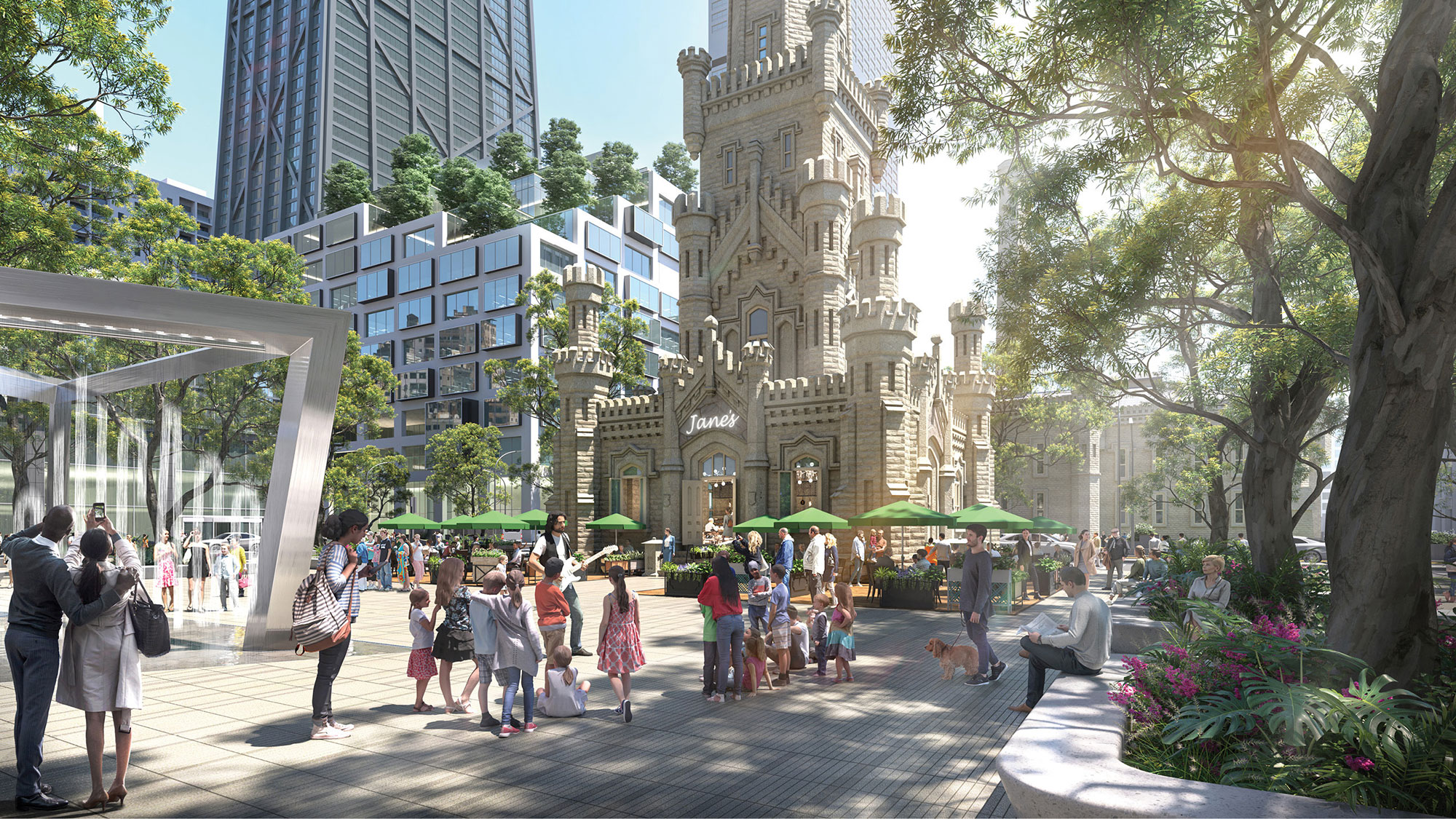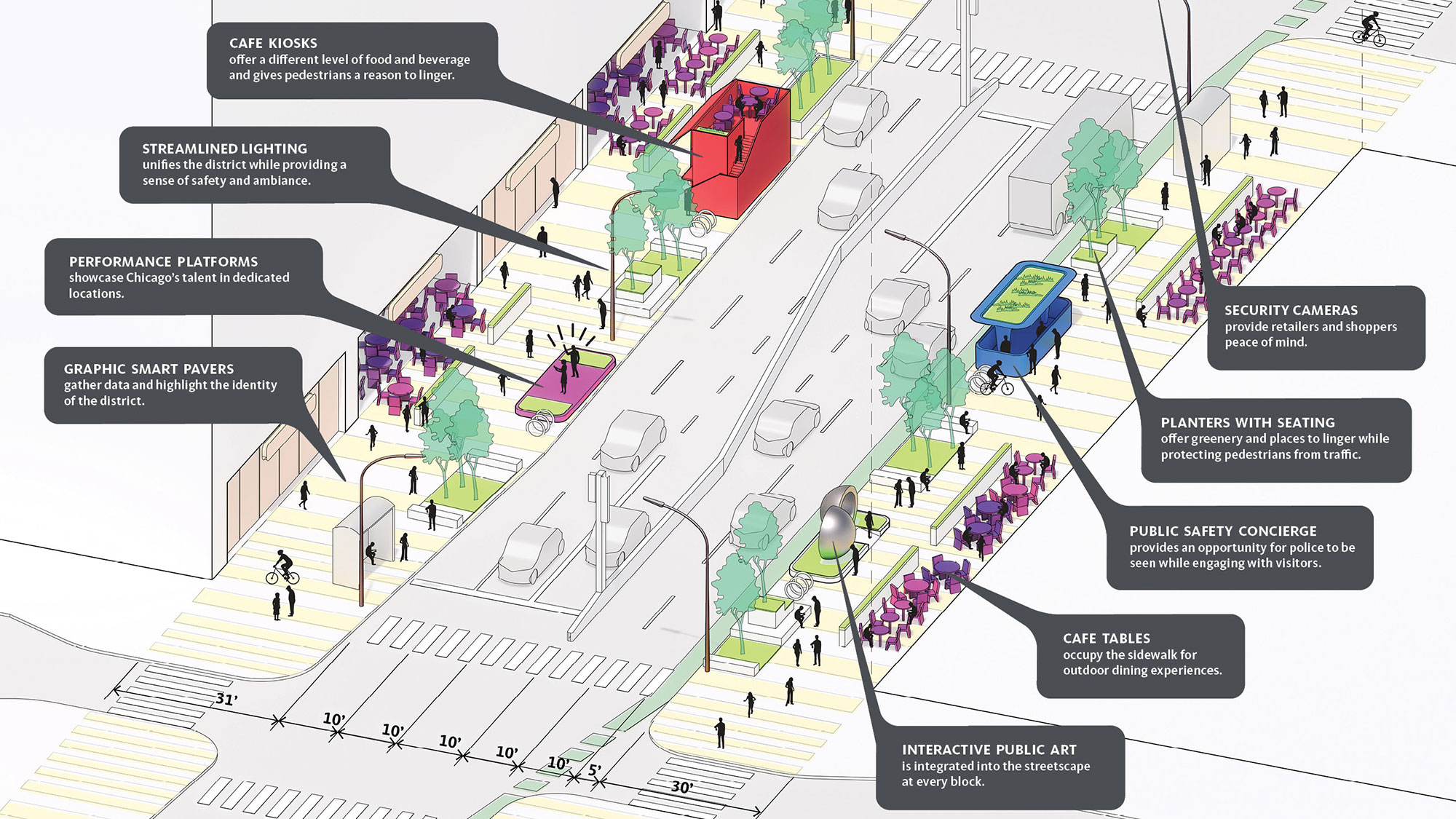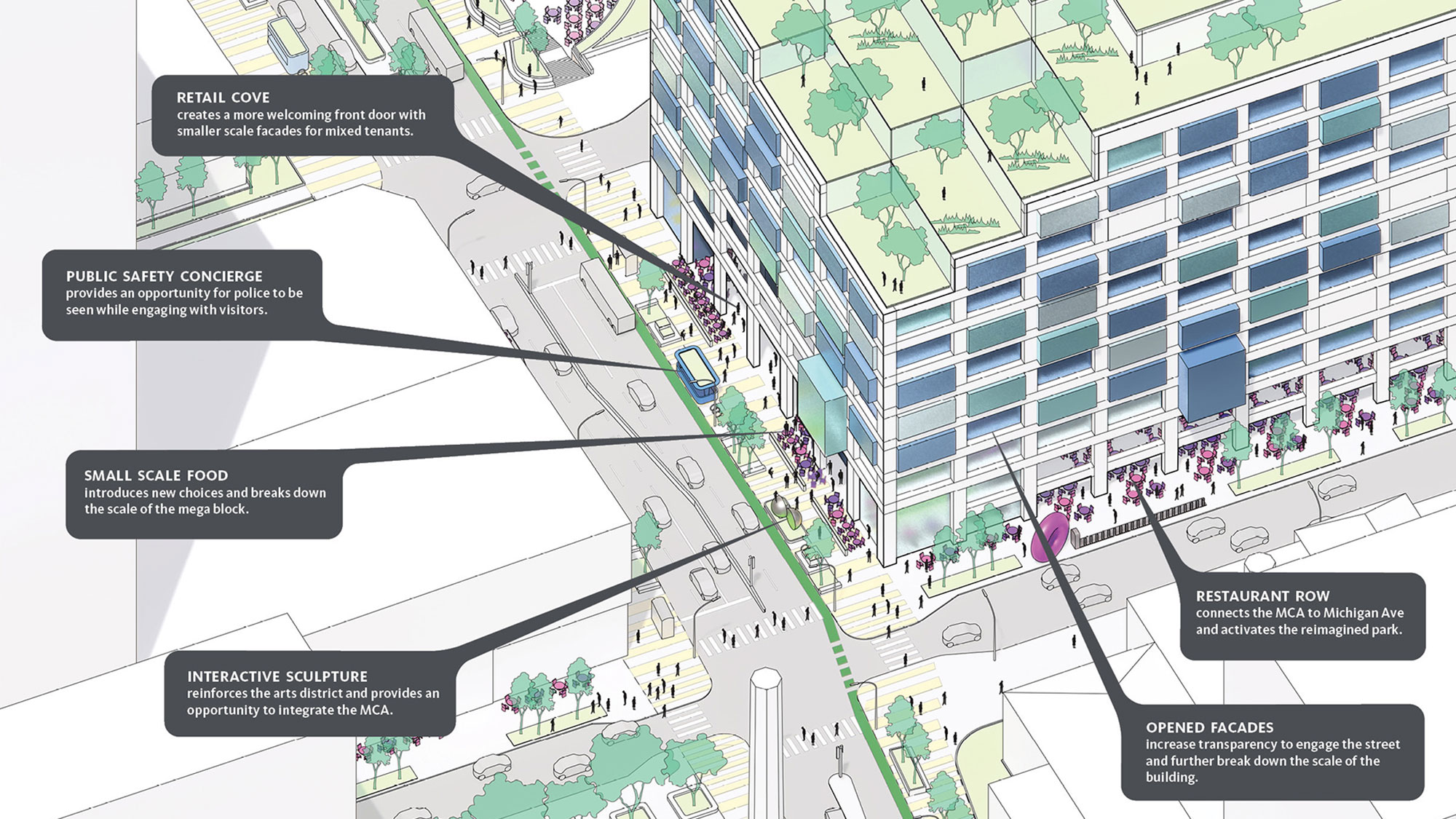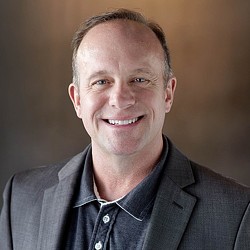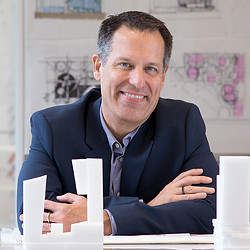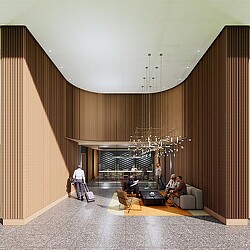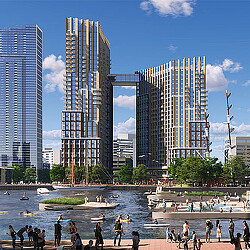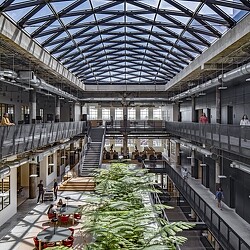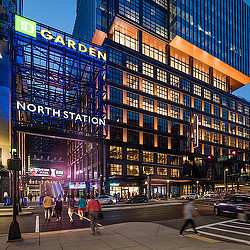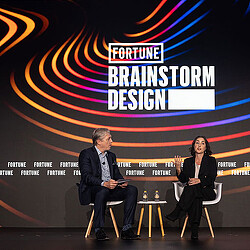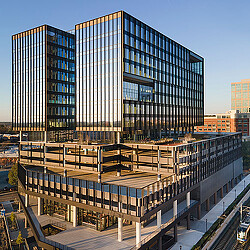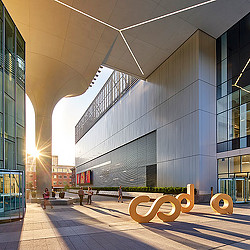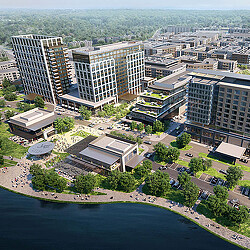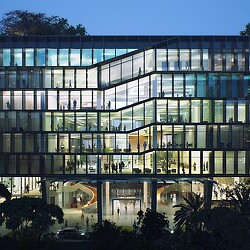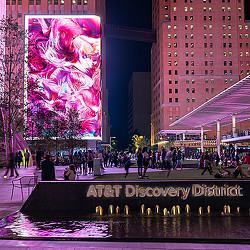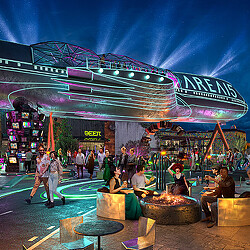Trends to Watch: The Future of Cities Relies on Multiuse Districts
Gensler’s Mixed Use & Retail Centers leaders discuss the opportunities shaping the future of cities and multiuse districts.
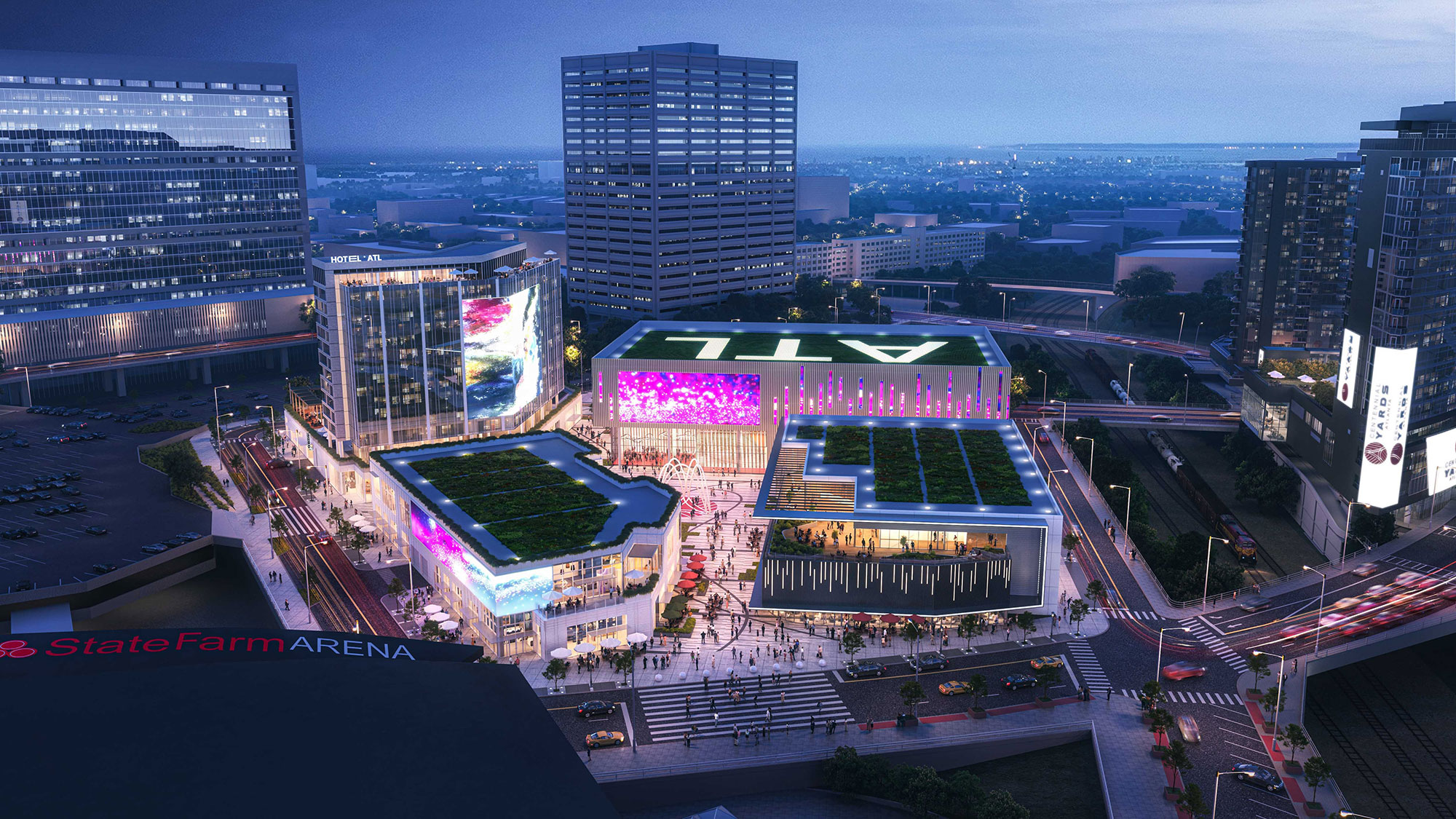
Editor’s Note: This blog is part of our Design Forecast blog series, looking at what’s next in 2025 and beyond.
As people continue to crave a variety and diversity of communal experiences, developers are turning to vibrant, mixed-use environments to unlock opportunities that attract visitors, tenants, and revenue streams in new and unexpected ways. We sat down with J.F. Finn and David Glover, global leaders of Gensler’s Mixed Use & Retail Centers practice, to discuss what’s next for the future of cities and multiuse districts.
What are the biggest trends that you’re seeing impacting mixed-use developments?
J.F. Finn: In the last five years or so, most development has been moving to mixed use — with experiences leading the way. Mixed use has both the broadest capability and the greatest opportunity to bring people together in a robust way. You need to have that variety and diversity of uses, of people, and experiences to give people a reason to come and to stay.
If we look at how cities are going to reconfigure and reinvent themselves, it’s going to be through experiencing community and the public realm, as well as speed to market. It’s not going to be through big, cool new vanity buildings. Therefore, the best opportunity to unlock a city’s potential is to be able to co-opt the existing building stock and ground plane — i.e, the public realm. The uses themselves are not as precious as having the spaces in between be really accessible and vibrant, and providing the infrastructure to support them. The public and private sectors have to work together for mutual benefit.
David Glover: We continue to see significant momentum in creative adaptive reuse and reimagining single-use shopping center properties into new vibrant hybrid social precincts. These properties often occupy premier locations in their host city with great highway visibility, and access. Taking a holistic design approach to transformation can unlock value, adapt to the new consumer mindsets, and better connect properties to their surrounding communities, both physically and programmatically. The key to success will be in fabricating a cohesive and complex layering that resembles the traditional city and moving away from the suburban linear experiences of unrelated objects and segregated uses.
Content is still king, and the livelihood of any mixed-use development is dependent upon the ability to stay relevant by listening to your community and providing a robust, seamless, and fully orchestrated experience full of intriguing options. This is no easy task, with new demands on landlords to be arbiters of commerce and culture, curators of emotive experiences, and ambassadors of merchandise, always bringing about an element of newness.
We see our clients stepping up and creating incredible programming that is unique to its place, enabling people to explore, interact, and participate in the reimaged contemporary town square. Westfield Century City is a great example of committing to community-driven activation, culminating in their beautiful main gathering space that always surprises and delights and acts as a year-round must see for locals and tourists.
Sports and entertainment districts are booming right now. What’s driving this trend, and how has it evolved?
J.F.: The next big development trend is around large entertainment or sports-anchored uses. There’s massive opportunity around those uses because you can completely transform an area in one fell swoop. The mega developments of the past have always been big office buildings or campuses. But now, the anchor is generally some sort of entertainment or place that brings people together. When we talk about the repositioning of cities, it’s about transforming the public realm, which requires public-private partnership. Impactful development is going to be around sports and entertainment districts, which have the money, the wherewithal, and the opportunity to make really big moves and transform places. Sports, the arts, and live activations are uses people can rally around together, and they build a collective pride of place and experience.
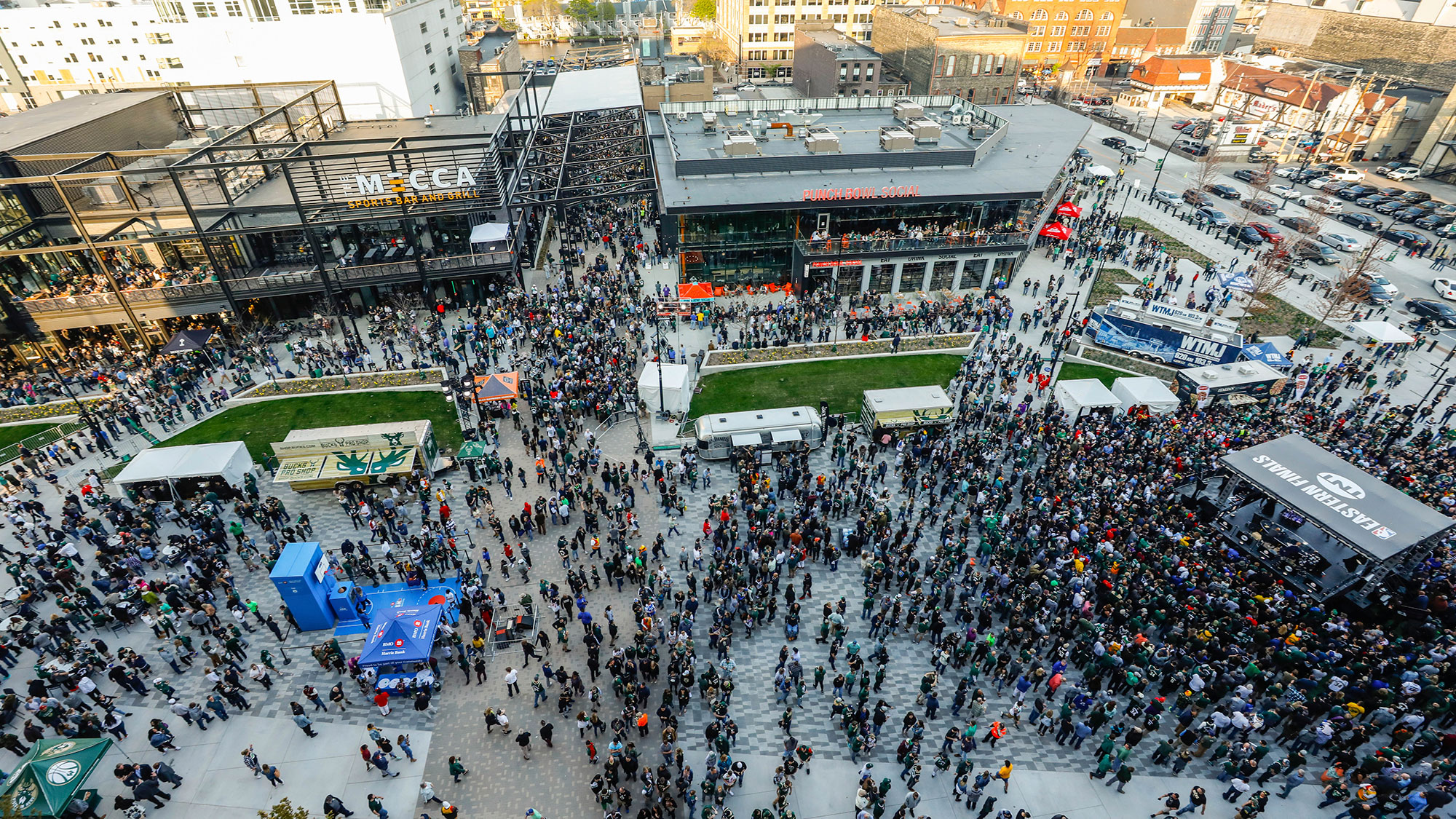
The opportunities for sports and entertainment districts are typically in major urban environments, although sometimes they’re in a second-tier city or a suburb of a big city. These new developments are in areas where there’s land available, and you can create a new community with it, but it has to be accessible to large numbers of people, which means there’s usually also a significant need for transit connections, for example like The Hub on Causeway and North Station in Boston. So, how do we create a vibrant, mixed-use district to support the stadium? Well, one way to do that, you need land, and the prime location is next to the airport or train station, in an area that’s growing rapidly and has infrastructure available. The sports facility anchors and helps define the district and the mixed-use components leverage the investments to provide utilization during non-peak hours.
So that’s one model, and then you have the other model, which is in an area where you can take down enough land around a sports stadium, an arena, or someplace that has entertainment use to get enough assemblage of property to have a vibrant mixed-use district. The Milwaukee Bucks Entertainment District and Crypto.com Arena are great examples of projects in the middle of cities where there are tremendous opportunities to adapt underutilized buildings or use the stadium or arena to bring residential into the neighborhood.
You need a vibrant mixed-use environment to activate these places year-round. Residential is an absolute must. And then you’ve got to have great public spaces and programming. AT&T Discovery District is highly successful because of how they program it. You can’t just build it and say they will come. You have to be engaged and invested in programming those areas for people.
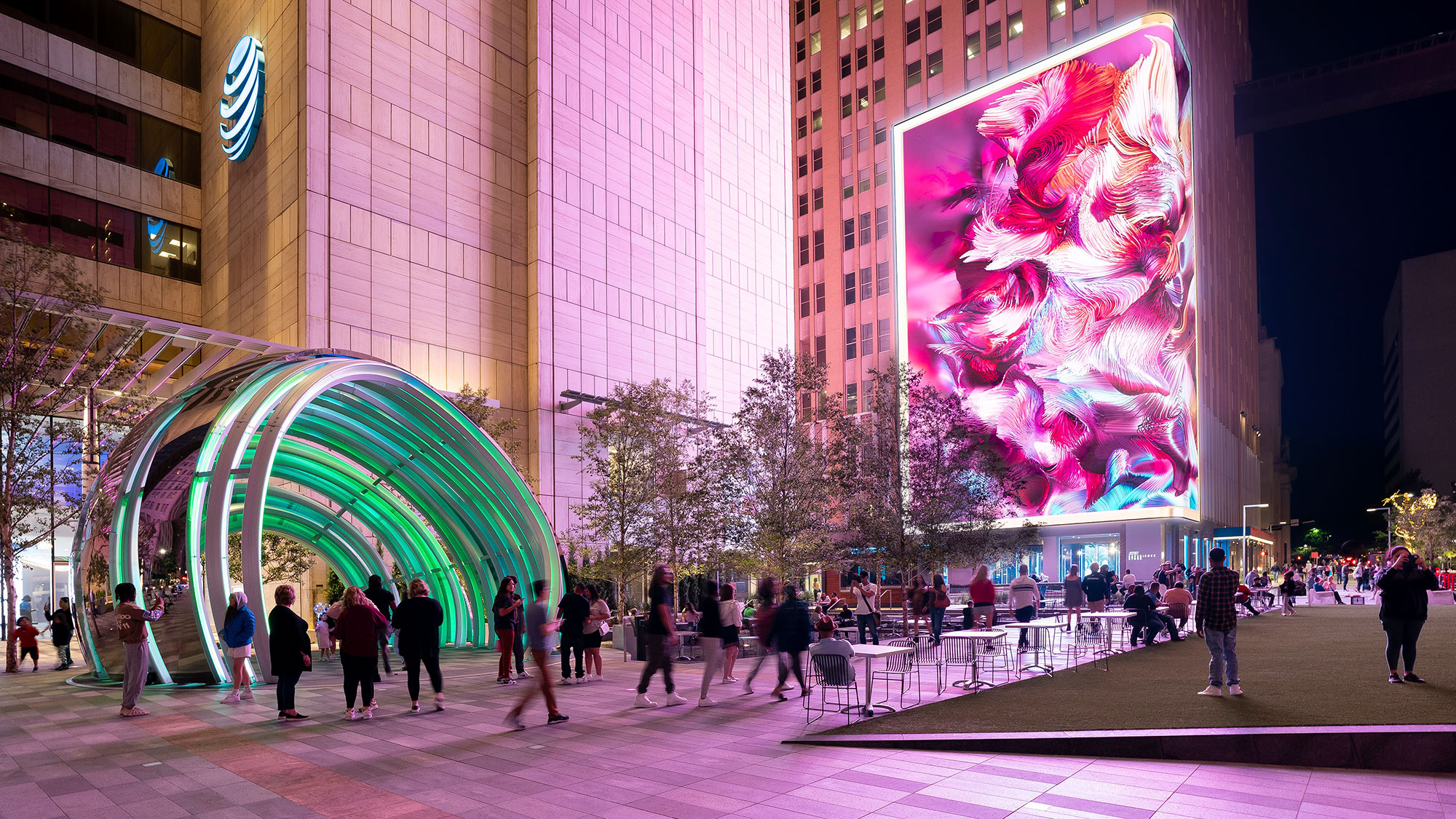
What role do you see strategic placemaking or the public realm playing in reinventing cities?
J.F.: We always start with: “How do you take the public realm as a public-private investment and really make it the catalyst for something?” To really leverage the investment requires cities and municipalities to be actively engaged participants, whether it’s through tax mechanisms to draw people in or other investments and interventions. That’s the mechanism for bringing back cities. What can we do, as planners, designers, and advocates, to help make our cities really vibrant? And how can our cities collaborate with the private sector to open up opportunities, create a safe environment, and provide efficient and appropriate infrastructure?
The work our Chicago team did in reimagining North Michigan Avenue is a great example. It’s taking places with a great foundation, making them more pedestrian oriented, getting public-private investment into the public realm, and making a commitment to an entire area and ecosystem. Activity helps also create a safer environment, and this is the way to create a catalyst for reinvention of our cities and unlock the potential of our urban cores.
David: Deeply held human desires for gathering, belonging, and storytelling are now reemerging as key drivers in urban placemaking and reinventing purpose of place for cities. Great cities, districts, and places have a defined persona, which has the ability to trigger aesthetic emotions. They deliver that visceral moment when something inside you connects with the place in a special way, a beyond ordinary life experience that can elicit an emotional response. And it happens to everyone: That highly emotive sense you get, which can sometimes be difficult to describe, but you just know it just feels amazing.
Are you seeing the emergence of smart mixed-use environments, combining smart technologies and placemaking?
J.F.: We believe strongly that these strategies are the best investment and de-risking approach. You have to, at a minimum, have a robust infrastructure to allow for the plugin for the next generation of experiences, whether it’s motion capture, 3-D mapping, or even festivals. Static digital is like an old highway sign; it’s not drawing any people in. If you’re investing in anything that’s digital, it has to be participatory to hold your attention and allow you to be part of the experience, not just an observer. A great example is AREA15 in Las Vegas, which changes all the time with all kinds of quirky, unique, and affordable offerings to participate in. AREA15 has a 30% visitor return rate. People are coming back there over and over again because they know that every time it’s going to be something interesting and different to engage in.
David: A mixed-use development is designed as a complex set of systems, spaces, and economies that dovetails into other systems, crafting an intimate joinery with its surrounding city fabric. Today, art, science, and technology converge and synergize in smart mixed-use developments to produce physical spaces that optimize systems for operational cost savings, energy consumption, traffic management, infrastructure resource management, resilience, and connectivity — enhancing the overall quality of life for residents and the guest experience. We’re actively augmenting our process with integrative thinking at the intersection of technology and place. We see a great future for places that integrate new technology and services to help automate the journey, improve our lives, give us time back, and allow us to do anything, anywhere, anytime.
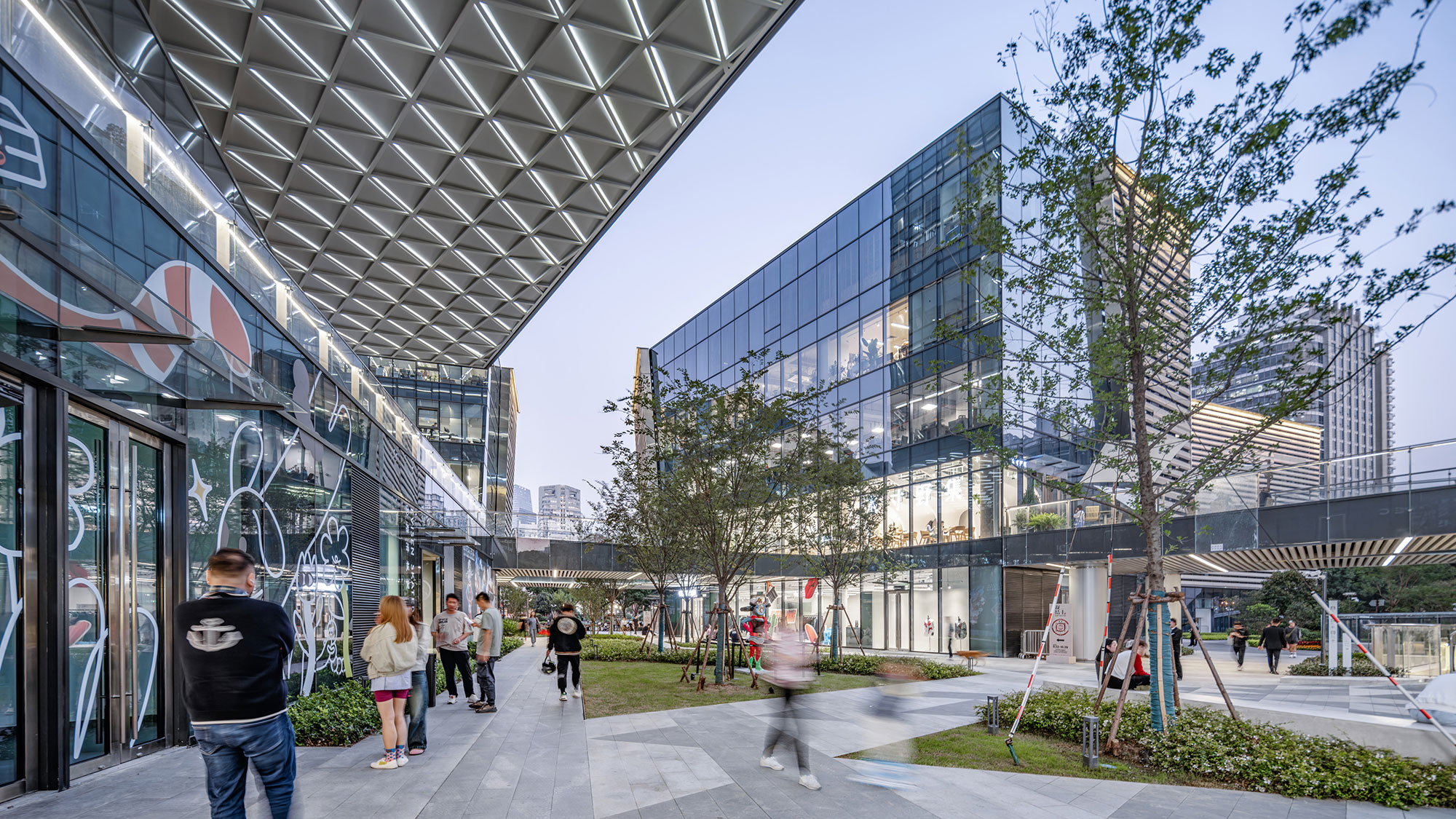
How are university campuses and towns increasingly becoming mixed-use districts?
J.F.: We are seeing remarkable opportunity for mixed-use developments in or near university campuses. In most cases, established colleges and universities are not going anywhere for the next 50 years, so you can make a safe investment around it. Universities typically have big endowments and tax breaks, and they’re part of public-private partnerships. They also have a large talent pool and built-in audience — whether it’s 20,000 or 60,000 future consumers in an in an area. University towns all over the U.S. are now blending a wide mix of uses off-campus to create entirely new districts , so it’s key to have that embedded community, walkability, and access to transit.
David: We’ll see more cities and higher education institutions take notice of the social, cultural, and economic benefits of partnering together to create a collaborative planning process. The outcomes will be active communal places that dissuade notions of exclusivity and form a social common ground between the student body and the community. These new prototypes will serve as a new model for future city planning initiatives, urban development, and public-private partnerships.
Universities are hubs of innovation, research, and entrepreneurship and often serve as an anchor to surrounding real estate development. There is a synergistic opportunity for students choosing to remain in their college town after graduating and corporations, research labs, and entrepreneurs looking to attract top talent.
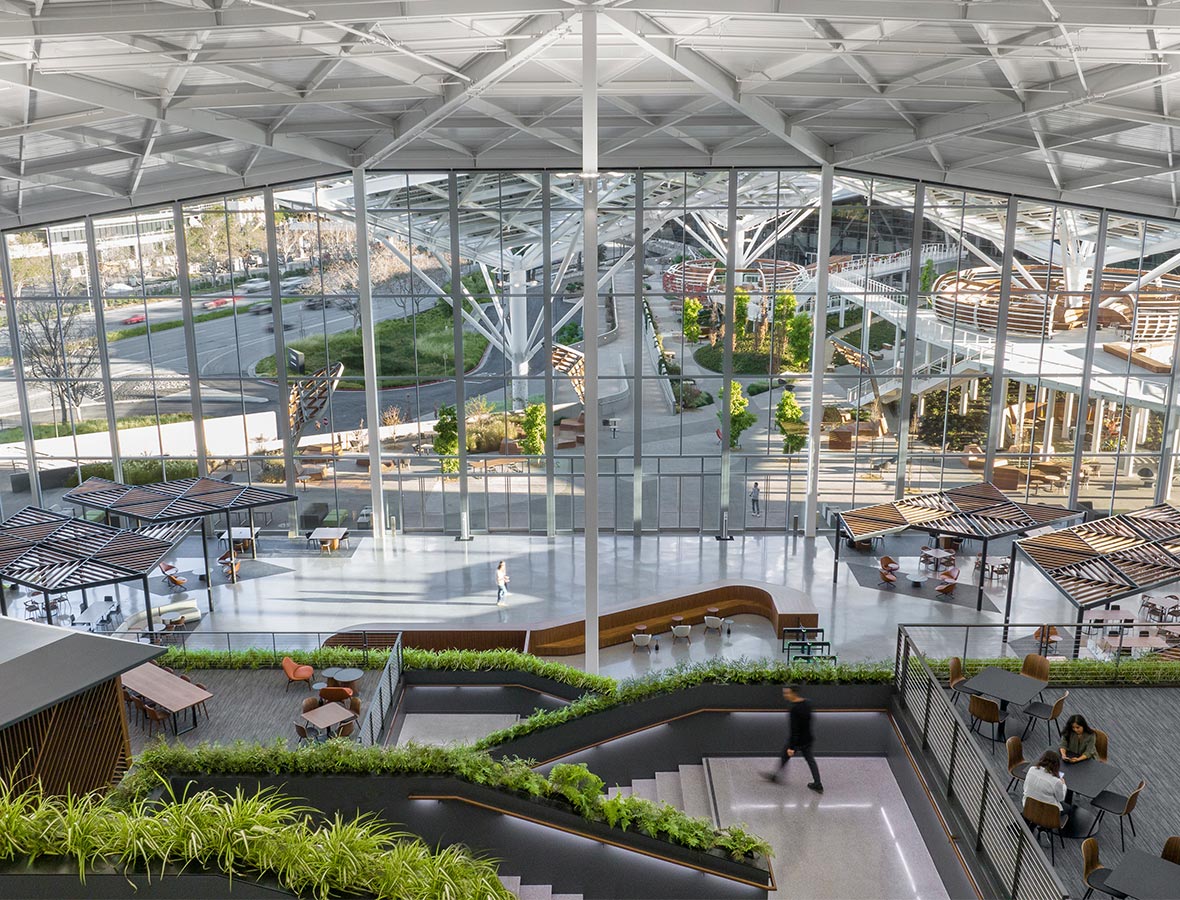
For media inquiries, email .
